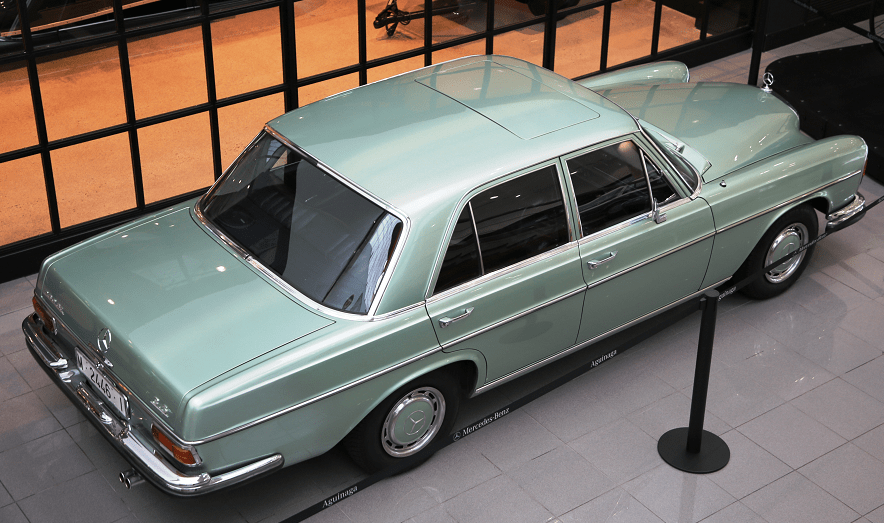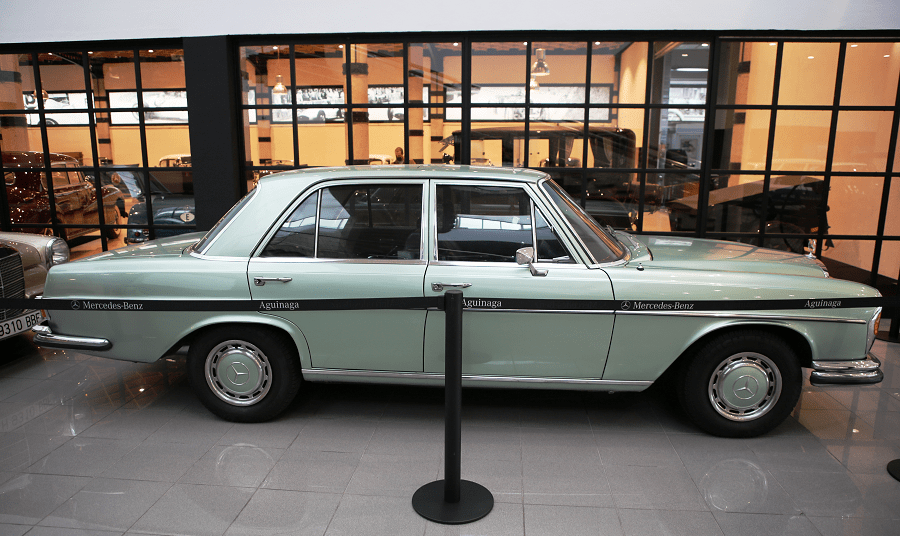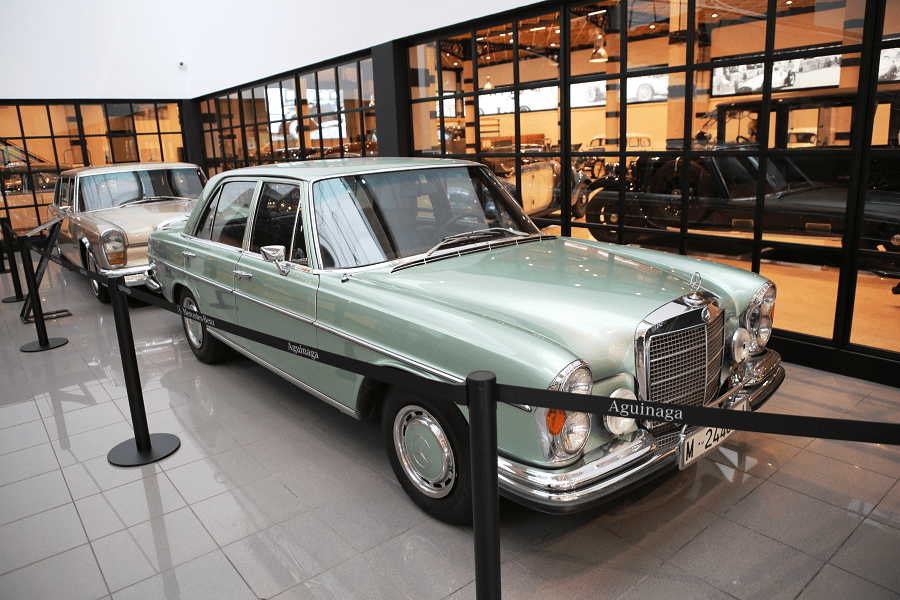Mercedes-Benz W108/W109 230 SE 3.5.
The Mercedes-Benz W108 and W109 are luxury cars produced by Mercedes-Benz from 1965 through to 1972 (or 1973 in North America). The line was an upgrade of the Mercedes-Benz W114/W115, to succeed the W111 and W112 fintail sedans. The cars were successful in West Germany and in export markets including North America and Southeast Asia. During the seven-year run, a total of 383,361 units were manufactured.
Since the W108 and W109 were only available as 4-door models, similarly squarish 2-door W111 and W112 coupés and cabriolets, without pronounced tailfins, filled those niches and are frequently mistaken for W108/109 two-doors.
Differences between W108 and W109
Due to the success of long wheelbase 300 SE Lang (W112), which was intended as an interim car between 300 “Adenauer” (W189) and “Grosser Mercedes” 600 (W100), Mercedes-Benz continued to offer two wheelbase lengths for W108/W109. Initially, the wheelbase lengths denoted W108 (standard) and W109 (long). For 1968 model year, this distinction changed with the introduction of 280 SEL that retained W108, rather than W109, chassis designation.
The larger 3-litre six-cylinder inline engine (300 SEL) were exclusive to W109 with odd exception of standard wheelbase 300 SEb (1965–1967), which was designated as W108. The smaller six-cylinder inline engines (250 S/SE and 280 S/SE/SEL) were assigned to W108 only. Both eventually received the V8 engines in 1967 (W109) and 1970 (W108).
W109 was more luxuriously appointed than W108, featuring burled walnut dashboards, automatic transmission, and power windows along with optional air conditioning system. Most obvious distinction from the W108 were door window frames and a-pillars fully finished with polished metal bright trim.
The W108 and W109 had different types of suspension systems: W108 retained the steel coil springs and oil-filled shock absorbers while W109 used the self-levelling air suspension.















